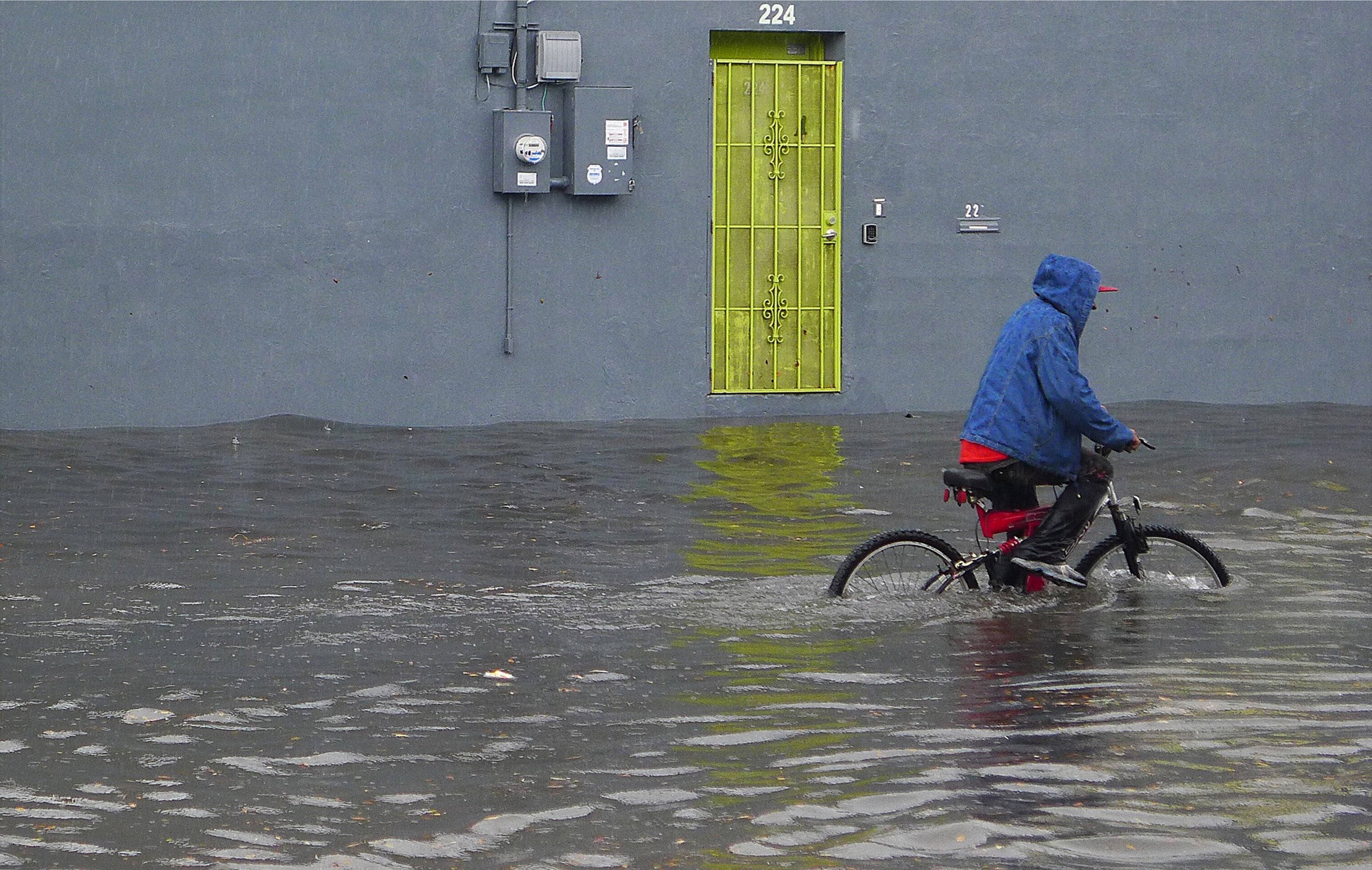
CLIMATEWIRE | More than half of the 2.6 million residents in the Miami area will experience “climate gentrification” and pressure to relocate if sea levels rise by 40 inches, according to a study published Monday.
Rising oceans will push many coastal residents inland, where they will force an increase in housing costs that could displace as many as 56 percent of households in Miami-Dade County, according to the study published in the journal Environmental Research Letters.
“Markets are aligning with the idea that there is a higher flood risk in these lower lying areas,” Nadia Seeteram, the lead author of the study and a researcher at the Columbia Climate School, said in an interview. “The areas that happened to be gentrifying also happened to be among some of the higher-elevated areas” and that are “homes to historically marginalized communities.”
In Miami-Dade, many minority neighborhoods with lower income levels sit higher than rich beachfront areas. Miami’s famous Little Haiti neighborhood, which is 10 feet above sea level and where nearly half the residents live below the poverty line, has experienced a recent surge in development and property values, raising concerns about displacement.
Potential climate gentrification extends beyond Florida. Sea-level rise will displace as many as 13 million people in the United States by 2100, according to a 2017 study. Up to 2.2 million New York City residents will face high risk of regular flooding from rising oceans by the same year, according to New York nonprofit Rebuild By Design.
In 2022, NOAA predicted that large parts of U.S. coastal cities will be submerged from 42 to 84 inches of sea-level rise by the end of the century if global warming causes temperatures to rise 2 degrees Celsius above preindustrial levels.
Seeteram and her team started their analysis by designating each of Miami-Dade’s 700 census tracts as very vulnerable, moderately vulnerable or not vulnerable based on 13 socioeconomic factors relating to income, race, education and elderly population. The researchers then classified the Miami-Dade population into four categories based on their risk from sea-level rise.
The categories are “stable” residents who are unlikely to be inundated and have ample resources; “migrating” individuals who will face sea-level rise but have enough money to move; “displaced” households that are less likely to face flooding but will experience climate gentrification; and “trapped” populations that lack resources to relocate and will have their homes inundated from rising seas.
With 40 inches of sea-level rise, roughly 19 percent of Miami-Dade County residents will be “stable,” the study predicts. Roughly 7 percent will be “migrating,” with many choosing to move. And approximately 19 percent will be “trapped” in their inundated homes, unable to relocate.
The remaining 56 percent will be “displaced” due to rising housing costs as people move in from flood-prone areas.
With 80 inches — or 2 meters — of sea-level rise, nearly half of the Miami-Dade population will be “trapped” and 25 percent will be “displaced,” the study found. Only 8 percent will remain “stable” and 18 percent will be “migrating.”
The study provides a new model for understanding both property damages caused by sea-level rise and economic impact from land scarcity, Seeteram said.
“This is a framework that is broadly applicable to coastal communities across the country,” Seeteram said. “It allows you to take a look at who’s flood-exposed, their level of vulnerability and who’s not impacted through time.”
Reprinted from E&E News with permission from POLITICO, LLC. Copyright 2023. E&E News provides essential news for energy and environment professionals.



